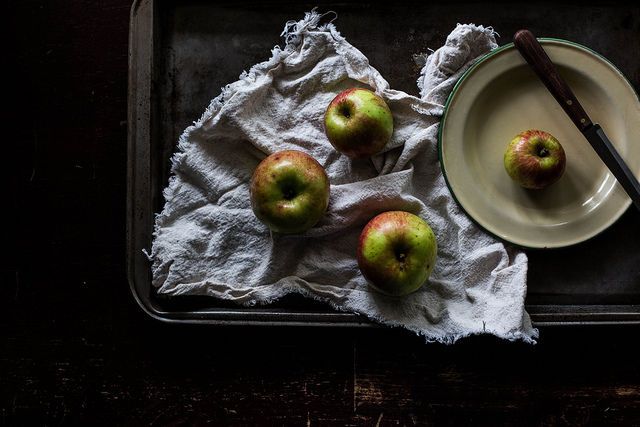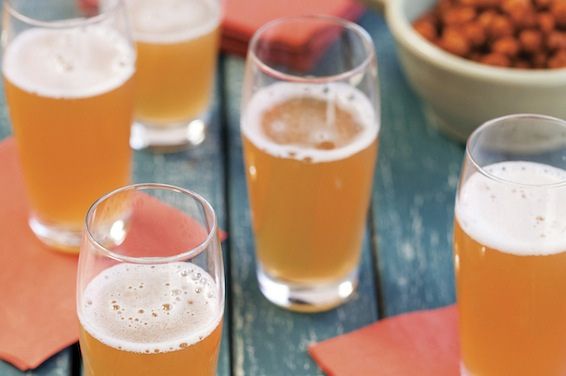
On our new weekly podcast, two friends separated by the Atlantic take questions and compare notes on everything from charcuterie trends to scone etiquette.
Listen NowPopular on Food52
10 Comments
Lisa M.
May 15, 2014
Dude I'm obsessed with cider! I even have a cider tasting club in BK called Tongues N Cider. Nice work, guys!
luvcookbooks
January 25, 2014
Thank you for starting this conversation! I love hard cider but first drank it in France and am not very knowledgeable about it, would love more columns/tasting tips.
Brandt B.
January 24, 2014
Quite peculiar the historical view here... "settlers brought traditions from England". In the Hudson Valley region the settlers who initially were mostly Walloons from the Valenciennes area of what is now France - and came to New Amsterdam via Dutch ships in 1624. These followed by hundreds of other Dutch and Northern European emigres from countries all over N. Europe and Scandinavia - and with them of course their own brewing traditions. One can easily find, if one wanted, a list of brewers/tappers in what was once New Amsterdam and Fort Orange (now New York and Albany respectively). What do you imagine they brewed? Was is "hard cider"? It be a worthwhile search both for you the author/historian...and most importantly...your readers.
AT B.
January 27, 2014
Hi Brandt,
Thanks for your thoughtful comment! I did find in my research that many of Northern and Western Europe's countries had ancient cider-making traditions of their own -- especially French cidre but also Swedish perry, Spanish sidra, etc. But the scholarly texts I encountered point to English varieties and methods as the predominant influence on American soil. We did change the sentence to reflect this more clearly. Thanks for reading!
Thanks for your thoughtful comment! I did find in my research that many of Northern and Western Europe's countries had ancient cider-making traditions of their own -- especially French cidre but also Swedish perry, Spanish sidra, etc. But the scholarly texts I encountered point to English varieties and methods as the predominant influence on American soil. We did change the sentence to reflect this more clearly. Thanks for reading!
Brandt B.
January 27, 2014
Lindsey - I saw that you had made some minor changes to your piece. Let me put a finer point on it. The traditions of various cultures in cider making aside... The salient point still is your title and phrases e.g...."The History of America's Oldest Alcoholic Drink"..."In fact, its (cider) roots go deeper in American culture (I'm not sure I know what this means...American culture?) than those of any other alcoholic drink". which again, are highly doubtful...misinformative. I just spoke to Peter Rose on the phone, who is a food historian and authority on early Dutch culture culinary practices in pre-Colonial America - she said emphatically that the Dutch were brewing beer with hops etc. etc. in the Albany, NY (then Ft. Orange) around 1632 from confirmed dates, much likely earlier...as they would have brought brewing resources with them, just as the English did. There are numerous records of this.
Since your article, though, seems to focus on only one element of our immigrant/culinary history - the English, I would note, that in 1607, the newly-arrived colonists at Jamestown had their first feast. George Percy reported that among the potables was beer. They continued to brew and badly it was said. Later in the 1630's, the Mass Bay colonists were planting barley and constructing malt kilns...
So, you have different immigrant cultures brewing different several types of alchoholic beverages concurently...beer from hops, barley, combinations of those, some with bark, and hard cider. So what is the larger point?
While your article about hard cider is an interesting and lively one, ciders' roots neither "go deeper in American culture than those of any other alcoholic drink"...nor is it "America's Oldert Alcoholic Drink. I would kindly suggest to you...these are where your corrections need to be made...
Since your article, though, seems to focus on only one element of our immigrant/culinary history - the English, I would note, that in 1607, the newly-arrived colonists at Jamestown had their first feast. George Percy reported that among the potables was beer. They continued to brew and badly it was said. Later in the 1630's, the Mass Bay colonists were planting barley and constructing malt kilns...
So, you have different immigrant cultures brewing different several types of alchoholic beverages concurently...beer from hops, barley, combinations of those, some with bark, and hard cider. So what is the larger point?
While your article about hard cider is an interesting and lively one, ciders' roots neither "go deeper in American culture than those of any other alcoholic drink"...nor is it "America's Oldert Alcoholic Drink. I would kindly suggest to you...these are where your corrections need to be made...
AT B.
January 29, 2014
Hi Brandt! Certainly, we agree that other alcoholic beverages were being made at this time, including beer and other alcoholic drinks. This article's intent, as you noted, is to focus on one element of our culinary history: hard apple cider's legacy as an essential--and I would argue, the earliest primary--alcoholic beverage sitting on the American table prior to Prohibition.
Mr O.
December 25, 2015
Brandt's temper tantrum aside......yes there were many immigrant groups that made various alcoholic beverages....true. But it's also true cider was bigger, more easily made in Colonial America than any other alcoholic beverage. Fact. Apple trees were brought over by the English colonists and apple trees thrived in New England and in and around New York City, namely New Jersey. Beer ingredients frankly didn't grow very well in the colonies nor did grapes that the settlers hoped to grow...concord grapes were pretty much the only grape that grew and that grape makes a detestable wine. It wasn't until the Mid-west was settled with its rich soils that grains like corn and barley were grown in abundance. Cider, no doubt, was America's first alcoholic beverage to scale and become an everyday part of the culture as nearly every farmstead had an apple tree, thus nearly every family made and drank hard cider.
Catherine L.
January 24, 2014
I wish it were still acceptable to have a tankard of cider for breakfast every day. Then again, maybe I don't...
AntoniaJames
January 24, 2014
This is interesting. It would be really nice if the contributors who've "been hitting the books" to bring us Food History 101 would provide citations. Many of us would enjoy following up in more depth, I'm sure. Thank you. ;o)
AT B.
January 27, 2014
Hi Antonia! If you were interested in looking into cider more, these were a few resources helpful to me during my research.
1. Alcohol and Temperance in Modern History, ed. Jack S. Blocker, David M. Fahey, Ian R. Tyrrell, 2003.
2. The American Cider Book by Vrest Orton (1973)
3. Cider: Hard and Sweet, by Ben Watson (The Countryman Press, 2013)
4. And if you want to hear a rendition of "The Harrison Yankee Doodle," there's one right here: http://www.folkways.si.edu/oscar-brand/presidential-campaign-songs-1789-1996/childrens-historical/music/album/smithsonian
1. Alcohol and Temperance in Modern History, ed. Jack S. Blocker, David M. Fahey, Ian R. Tyrrell, 2003.
2. The American Cider Book by Vrest Orton (1973)
3. Cider: Hard and Sweet, by Ben Watson (The Countryman Press, 2013)
4. And if you want to hear a rendition of "The Harrison Yankee Doodle," there's one right here: http://www.folkways.si.edu/oscar-brand/presidential-campaign-songs-1789-1996/childrens-historical/music/album/smithsonian



See what other Food52 readers are saying.